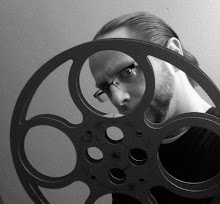“This time the mission is a man”
This month marks the 25th anniversary of Steven Spielberg’s SAVING PRIVATE RYAN.
A WWII epic, SAVING PRIVATE RYAN was inspired by the books of Stephen E. Ambrose and the accounts of the Niland Brothers; four American brothers who served in WWII with only one surviving. The plot follows in the days after the Allied invasion of Normandy, with a platoon sent out into enemy territory to find Private James Ryan, who has been ordered home after his three brothers were killed in action.
Development on the film began in 1995 with producers Mark Gordon and writer Robert Rodal, with Rodal inspired heavily by the novel D-Day June 6, 1944: The Climactic Battle of World War II by Ambrose. The project was brought to Paramount Pictures with action director Michael Bay hired to direct. Bay would eventually leave the project and the script would go to Tom Hanks, who would share the idea with Steven Spielberg who immediately signed on.
Spielberg’s initial approach to SAVING PRIVATE RYAN was to make it a basic, men-on-a-mission WWII flick, but changed things around after interviewing WWII veterans, who convinced him to tell their stories as opposed to the old Hollywood treatment. The cast would be an ensemble collection of actors, with Hanks as the leader of the platoon and Matt Damon as Pvt. Ryan. The rest of the outstanding cast would include Edward Burns, Tom Sizemore, Jeremy Davies, Vin Diesel, Adam Goldberg, Barry Pepper, Giovanni Ribsi, Dennis Farina, Ted Danson, Harve Presnell, Bryan Cranston, Nathan Fillion, Paul Giamatti, and Ryan Hurst.
Filming began in Ireland in June of 1997. The actors were required to go through a six-week boot camp prior to filming. Cinematographer Janusz Kaminski spent several weeks perfecting the film’s unique visual aesthetic. The harrowing opening battle at Normandy had many shots on hand-held, 16mm film, giving it a newsreel, as-its-happening look and feel. Scenes were also shot at the Normandy American Cemetery and Memorial at Omaha Beach. John Williams provided the score.
On release, SAVING PRIVATE RYAN would earn high praise from critics and from veterans. It would finish as the highest grossing film of the year, beating out the action summer blockbusters ARMAGEDDON and GODZILLA. At the 71st Academy Awards, it would win Best Director (Spielberg), Cinematography (Kaminski), Editing, Sound, and Sound Effects Editing. It would also be nominated for Best Picture, Actor (Hanks), Music (Williams), Screenplay, Production Design, and Makeup. The film would later be credited with renewing interest in WWII leading into the 21st century. The opening battle scene would hold influence over action films. Today it is considered to be one of the greatest war films of all time, with the American Film Institute (AFI), ranking it as the 71st greatest American Film.
*
Many of us can probably still remember our first big-screen experience with SAVING PRIVATE RYAN, especially the horrific, yet terrific opening battle scene of the Invasion of Normandy…a scene that had us ducking for cover and would eventually change the way action scenes would be filmed for the next 25 years. From there, we would expect the standard Hollywood treatment for a war film; assemble a group of soldiers to take on an impossible mission, usually a hill or a bunker. But this was where Spielberg and RYAN smashed expectations. This time the mission was to bring one man home, and to spare a grieving mother being handed another folded American flag.
Flag-waving and American bravado had been the standard Hollywood blueprint for war films for decades, and the grounded tale here, brought to life by Spielberg’s unique direction and the committed cast, is one that resonates and is timeless. Although the war and all of its horrors are in the film, it balances things out by telling a human story; the stories of the many men who fought in WWII. With that, it becomes a tribute to veterans from all wars.
From a technical standpoint, SAVING PRIVATE RYAN is a grand achievement in filmmaking. The look and cinematography brought us images we had never seen before, and today it still haunts. The script is surprisingly simple; just 10 total scenes/locations, and should be taught in every Screenwriting 101 class. And lest we forget John Williams’ magnificent theme, Hymn to the Fallen. From the breathtaking opening scene to the stunning final sequence, when the mission is to name some of Spielberg’s greatest works, or the best war films, or the all-time great movies in history, the answer comes down to one man.
“James, earn this. Earn it.”


No comments:
Post a Comment
A few rules:
1. Personal attacks not tolerated.
2. Haters welcome, if you can justify it.
3. Swearing is goddamn OK.